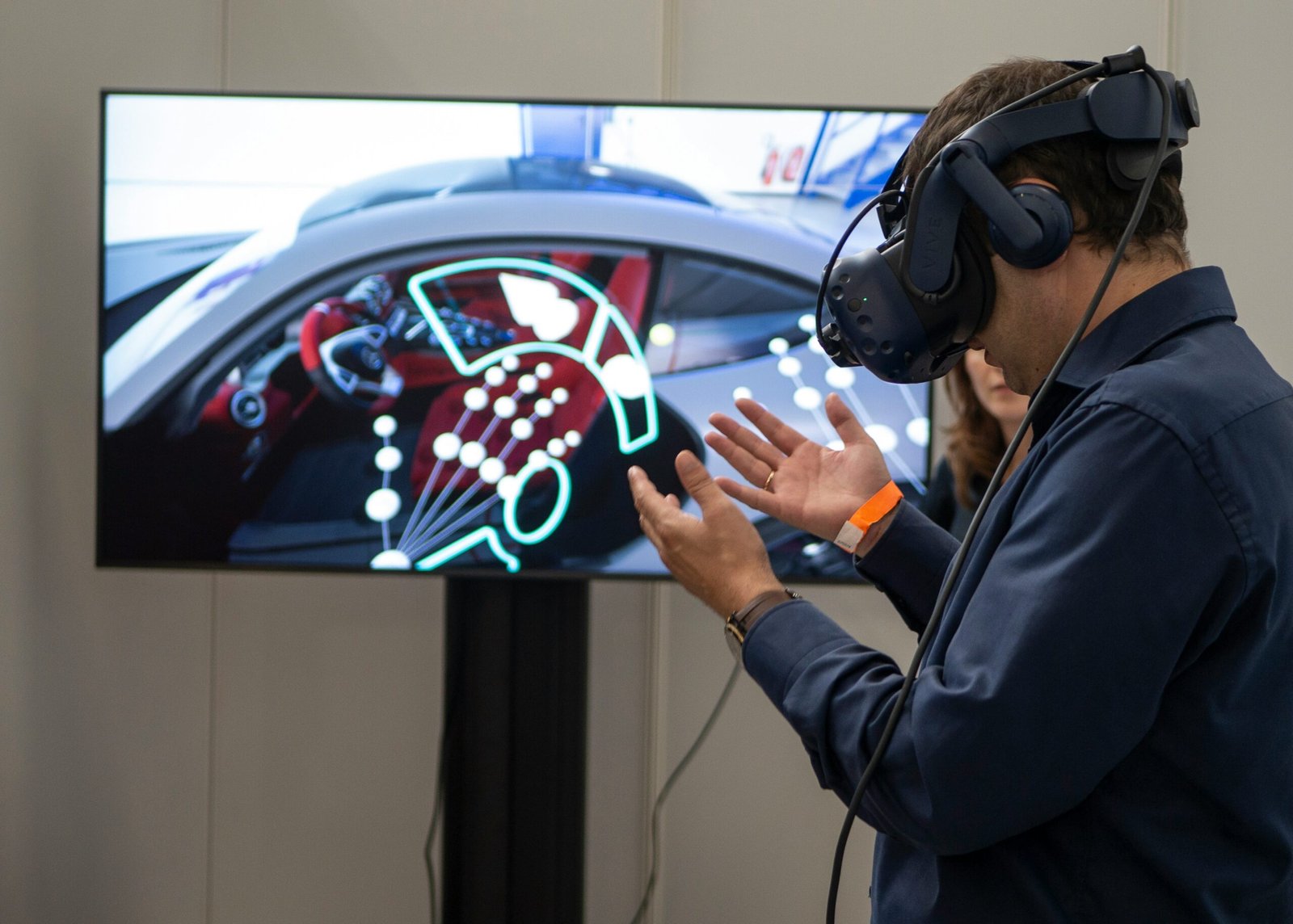Introduction to Digital Avatars
Digital avatars represent a significant evolution of digital representation in contemporary society. They serve as virtual embodiments of individuals within various digital environments, allowing users to express their identities and interact with others in ways that transcend the limitations of the physical world. The increasing prevalence of virtual reality, online gaming, and social media platforms has amplified the importance of avatars, making them a focal point of discussion in both scientific and philosophical domains.
At their core, digital avatars function as an extension of oneself, encapsulating facets of personality, preferences, and even aspirations. As we navigate through the intricacies of digital interactions, the avatars we create often reflect the personas we wish to project, blurring the lines between our digital selves and our real-world identities. This phenomenon prompts intriguing questions concerning the authenticity of these representations and the implications they carry regarding self-perception and social connection. Philosophers have long grappled with concepts of identity; the advent of digital avatars lends new dimensions to these enduring inquiries.
The relevance of digital avatars extends beyond mere representation, delving into the philosophical ramifications of existence and self-awareness in a dual-context environment. As individuals engage with their avatars, one cannot help but wonder about the psychological and societal impacts of this interaction. For instance, how does the existence of digital avatars affect our understanding of reality, autonomy, and the essence of being? Such reflections invite a closer examination of the intricate relationship between technology, identity, and the concept of self in the modern era.
Overall, digital avatars have emerged as a vital component of contemporary discourse, intertwining science and philosophy in ways that encourage deeper contemplation of identity and existence in our increasingly digital world.
Understanding the Concept of Digital Avatars
Digital avatars serve as a crucial interface between individuals and the expansive digital landscape. They are virtual representations of users, allowing people to navigate and engage within various online environments such as gaming, virtual reality, and social media. Fundamentally, a digital avatar can be portrayed as a customizable persona that spans a myriad of forms, from simplistic 2D icons to intricate 3D models reflecting one’s likeness and personality.
The importance of avatars has burgeoned in recent years as digital interactions continue to integrate deeper into our daily lives. Initially popularized in gaming environments, where players could embody a character, the concept of avatars has since expanded to encompass social media platforms and virtual reality. Users may choose avatars that align with their identities, desires, or even fantasies, effectively creating a multifaceted digital self. This adaptation has rendered avatars essential tools for self-expression, enabling individuals to communicate their identities in ways that transcend traditional face-to-face interactions.
Evolution plays a pivotal role in the current understanding of digital avatars. From the early simplistic designs of pixelated figures in video games to today’s highly realistic models used in immersive VR experiences, avatars exhibit a remarkable growth trajectory. Technological advancements, including artificial intelligence and machine learning, continue to enhance avatar functionalities, allowing for more personalized interactions. The ability to modify and animate these avatars in real-time further contributes to their relevance and effectiveness within digital realms.
Moreover, digital avatars impact the way we connect and interact with others. They shape social dynamics within various platforms, influencing behaviors and expectations in digital communications. As users become more invested in their avatars, the boundary between virtual and physical identities increasingly blurs, prompting intriguing philosophical discussions about self-representation, agency, and immersion in digital spaces.
Digital Avatars in Modern Science
Digital avatars have emerged as pivotal tools in various scientific domains, significantly advancing research and understanding. By closely simulating human behavior and physiology, avatars facilitate complex interactions that are invaluable in fields such as psychology and personalized medicine. For instance, in psychology, digital avatars are utilized to create engaging simulations that mimic real-world scenarios. These avatars enable researchers to study social interactions, emotional responses, and cognitive behaviors in controlled environments, providing profound insights into human behavior.
In the realm of personalized medicine, digital avatars are being developed to represent individual patients. These avatars are constructed using extensive biometric data gathered through medical examinations and assessments. Such representations allow healthcare professionals to visualize how different treatments may affect a patient before they are administered. This preemptive approach optimizes treatment efficacy, enhances patient outcomes, and reduces trial-and-error methodologies, marking a significant advancement in delivering tailored healthcare solutions.
Artificial Intelligence (AI) also harnesses the power of digital avatars, particularly in virtual environments where they act as interfaces for human-computer interactions. AI-driven avatars can adapt to user behaviors and preferences, creating a more intuitive experience in educational platforms, therapy sessions, and even in customer service. Their ability to engage users in a relatable manner not only fosters clearer communication but also enhances data representation. By serving as avatars of complex datasets, these digital representations help scientists visualize intricate information and draw meaningful conclusions.
Overall, the application of digital avatars in modern science epitomizes the confluence of technology and human understanding. They serve not only as mere virtual representations but as tools that bridge disciplines, facilitating enhanced analysis and insight into the complexities of human behavior and health.
The Philosophical Perspective on Digital Avatars
The emergence of digital avatars has sparked a rich dialogue surrounding deep philosophical inquiries into concepts such as consciousness, identity, and existence. Philosophers have begun to explore how these digital representations influence our understanding of self and reality. One significant inquiry pertains to the nature of identity in a digital context. Traditional philosophies uphold that identity is tied to physicality and continuity; however, as individuals create and inhabit various avatars online, this challenges conventional notions of personal identity. Are we still the same person when we adopt a new avatar, or does the avatar represent a separate entity altogether?
Renowned theorists like Martin Heidegger and Jean-Paul Sartre provide frameworks for understanding such transformations. Heidegger’s existentialism emphasizes authenticity and our being-in-the-world, while Sartre’s ideas on the self as a project suggest that our identity is ever-evolving and contingent upon choices. When individuals manipulate their avatars, they do not merely create a semblance of reality; they may also engage in an existential project that redefines their identity. The implications of this are profound, as it raises questions about responsibility and agency in virtual environments.
Additionally, the connection between consciousness and digital avatars mirrors discussions found in philosophical inquiries about artificial intelligence. The essence of what it means to be conscious becomes blurred when avatars exhibit human-like characteristics and behaviors, prompting discussions about the nature of self-awareness in non-human entities. Are avatars merely tools for expression, or can they transcend into realms that evoke consciousness?
In examining these philosophical perspectives, we begin to understand that digital avatars are not merely representations; they actively participate in the formation of identity and reality. This fosters a re-evaluation of how individuals relate to themselves, others, and the broader universe in a digitized world.
Real-World Applications and Theories
The concept of digital avatars transcends mere representation within virtual environments, manifesting as multifaceted instruments that enhance user interactions across diverse platforms. Theories surrounding digital avatars suggest that they serve not just as visual identifiers but also as extensions of the self, allowing individuals to express their identities in ways that may not be possible in real life. One of the prominent applications of digital avatars can be observed in online gaming communities, where players create and customize avatars to navigate immersive worlds. This personalization fosters a sense of belonging and engagement, promoting social interactions among players.
In educational settings, digital avatars have been utilized to create interactive learning experiences. For instance, platforms employing virtual reality (VR) often integrate avatars that facilitate role-playing scenarios, enabling students to step into different perspectives. This method enhances empathy and understanding, as learners engage with material in a context that encourages active participation. According to researchers, such applications underscore the cognitive and emotional benefits associated with avatar usage in education, increasing motivation and retention among students.
Furthermore, the rise of telepresence technologies in professional environments showcases another transformative application of digital avatars. Remote employees can employ avatars during virtual meetings, facilitating non-verbal communication that mirrors in-person interaction. These digital representations help bridge the gap arising from physical distance, creating a more inclusive workspace. Designers have also explored the potential of avatars in fostering mental health support, offering individuals a platform to explore their identities and express feelings in a safe and controlled environment.
This intersection of science and philosophy surrounding digital avatars illuminates their significance, suggesting that they are not mere constructs, but tools that enrich human experience. The ongoing exploration of avatars in various fields continues to uncover new dimensions, hinting at further advancements that will enhance their relevance in our increasingly digital lives.
The Role of Digital Avatars in Identity Formation
Digital avatars have increasingly become pivotal in the expression of personal identity within virtual environments. As individuals navigate online platforms, they often take on avatars that reflect their desired self-image, serving as a digital representation of who they are or aspire to be. This phenomenon is particularly significant in gaming, social media, and virtual reality spaces, where the creation of avatars allows users to experiment with different aspects of their identities, including gender, ethnicity, and personality.
Research indicates that choosing a digital avatar can significantly influence an individual’s self-perception and social interactions. For instance, avatars that align closely with the user’s real-world identity tend to foster greater feelings of belonging and authenticity in virtual spaces. In contrast, avatars that diverge from one’s actual appearance can facilitate exploration and self-discovery, enabling individuals to connect with alternate versions of themselves. A study by the University of Southern California highlights how users often gravitate toward avatars that embody traits they admire or wish to develop, ultimately impacting their interactions with others in the digital realm.
Besides self-exploration, avatars play a crucial role in social dynamics. The appearance and characteristics of a digital avatar can affect how others perceive and interact with its wearer. For example, an avatar designed with conventional attractiveness may yield more favorable responses during social exchanges, whereas a uniquely styled avatar might prompt curiosity and engagement based on originality. Moreover, research from the Pew Research Center reveals that individuals frequently adjust their avatars based on the social context, adapting their appearance to align with group norms or to stand out in competitive environments.
These choices surrounding digital avatar creation and representation not only reflect individual identity but also influence interpersonal relationships and community formation within digital platforms. Social psychologists emphasize that this interaction between the digital and the real world invites a deeper understanding of identity in the contemporary context, enhancing the complexity of how we perceive ourselves and relate to others.
Challenges and Ethical Considerations
The emergence of digital avatars in various online environments has introduced a multitude of ethical challenges that warrant cautious examination. One of the primary concerns involves privacy and the security of personal data. As individuals create avatars that may closely resemble their physical appearance, there is a risk that sensitive information could be exposed or misused. The integration of avatars into social media platforms, gaming, and virtual environments often leads to questions regarding how much personal data is collected, how it is utilized, and whether users possess adequate control over their digital selves.
Representation is another significant ethical consideration in the realm of digital avatars. As avatars can be customized to reflect various identities, including race, gender, and cultural backgrounds, the potential for misrepresentation arises. Users may choose to adopt identities different from their own, leading to discussions about authenticity and the implications of using avatars that do not correspond to one’s real-life characteristics. This phenomenon can distort social interactions and prompt ethical dilemmas surrounding appropriation versus representation, ultimately raising concerns about inclusivity and respect among diverse online communities.
Furthermore, the misuse of digital avatars is a paramount concern, particularly in gaming and social environments. Instances of harassment and cyberbullying can escalate when individuals hide behind anonymous avatars, making it crucial to examine the ethical implications of such behavior. It raises questions about accountability and responsibility in virtual spaces. How do we cultivate a culture of respect and accountability in online interactions? As we navigate these challenges, the engagement of users in ethical dialogues regarding the implications of their digital personas becomes increasingly important. The intersection of science and philosophy must address these pressing issues to shape a more responsible virtual landscape.
Future Implications of Digital Avatars
As technology continues to evolve at a rapid pace, the future implications of digital avatars are becoming increasingly significant. With advancements in artificial intelligence (AI), virtual reality (VR), and augmented reality (AR), digital avatars are poised to transform not only personal interactions but also various professional landscapes. These avatars may serve as a bridge between the virtual and physical worlds, enabling users to engage in complex tasks and foster personal relationships that transcend geographical barriers.
One prominent possibility is the integration of AI in creating highly sophisticated digital avatars that can learn and adapt to individual user preferences. This would allow for more personalized interactions in digital spaces. Users could engage with these avatars in real-time, whether for social networking, entertainment, or even education. The implications of this personalized technology could reshape how society communicates, as individuals may increasingly turn to these representations for companionship and emotional support.
Moreover, the rise of VR presents unique opportunities for immersive experiences. Imagine participating in a business meeting or educational workshop through your avatar in a realistic virtual environment. This evolution could enhance collaboration and creativity, allowing for a shared understanding that might be lacking in traditional methods of online communication. As we navigate this shift, ethical considerations surrounding privacy, consent, and the psychological impacts of avatar interactions will undoubtedly come to the forefront.
As we contemplate the future role of digital avatars in our lives, it is essential to recognize that with great technological power comes great responsibility. Societal norms and interpersonal relationships may be fundamentally altered by the integration of avatars into daily life. By preparing for these changes, we can leverage the potential of digital avatars while also addressing the accompanying challenges and ensuring a balanced approach to this digital evolution.
Conclusion and Reflection on Digital Avatars
Throughout this exploration of digital avatars, we have delved into their multifaceted roles in contemporary society, spanning from scientific applications to philosophical implications. The integration of avatars into our lives signifies not only a technological evolution but also reflects deeper human desires for connection, identity, and expression. As we navigate a world increasingly dominated by digital experiences, understanding the manifestations and impacts of digital avatars becomes imperative.
Digital avatars serve as windows into self-representation and social interaction in virtual spaces. They encapsulate the ways individuals choose to present themselves, transcending physical limitations, cultural boundaries, and even societal norms. Through avatars, users can experiment with diverse identities and foster connections in communities that might otherwise remain inaccessible. This customization highlights the uniqueness of human experience while raising questions about authenticity and representation in the digital realm.
Moreover, the philosophical inquiries surrounding digital avatars invite reflection on the nature of existence within digital environments. Are these avatars merely tools for interaction, or do they represent a deeper extension of our selves? As technology continues to evolve, it is crucial to ponder the implications that arise from our digital presences and their consequences on our understanding of reality.
As we conclude, it is essential to invite the reader to reflect on their relationship with digital avatars. How do these representations influence your perception of self and others? Do they enhance your sense of reality or contribute to a distortion of identity? As we move forward in an increasingly digital world, examining these questions can facilitate a deeper understanding of our engagement with avatars and their role in shaping not only our virtual experiences but our very lives. This introspection is vital in navigating the evolving landscape of digital existence.






